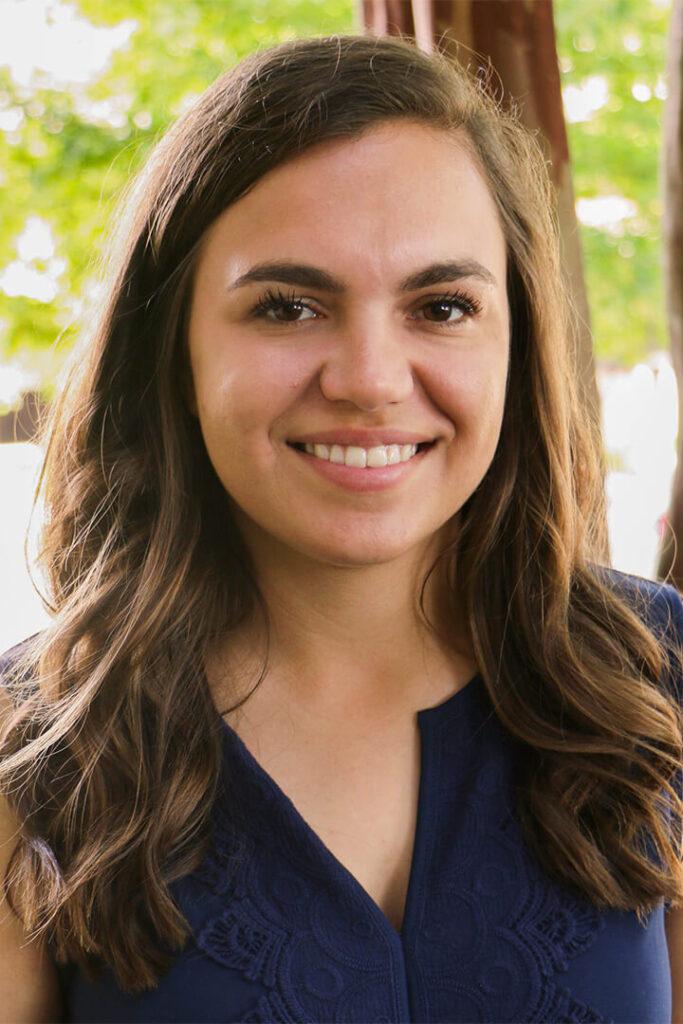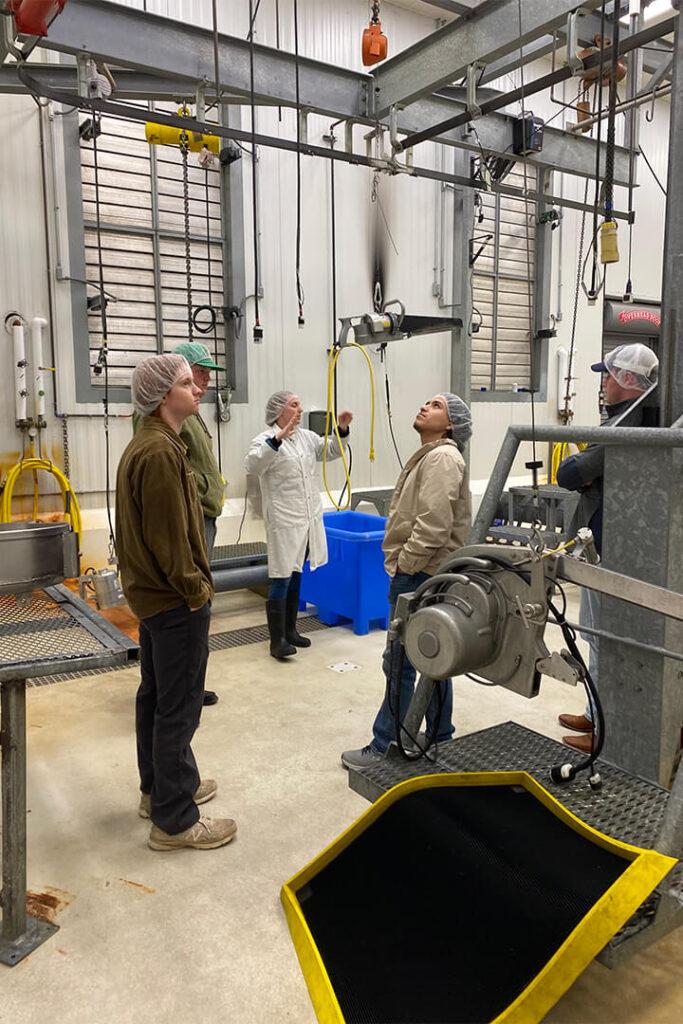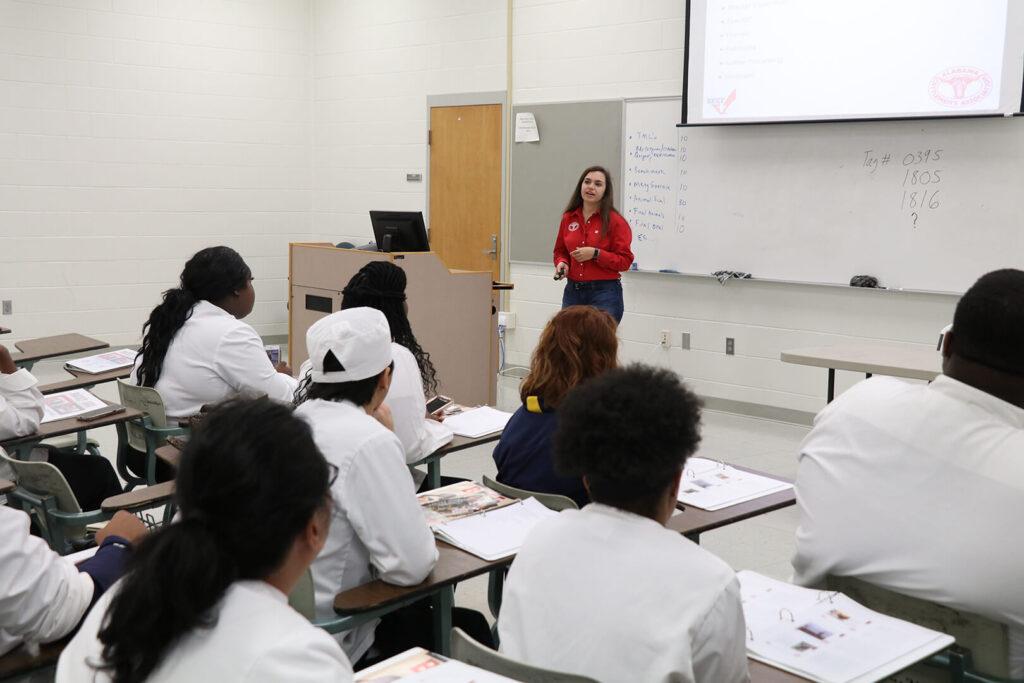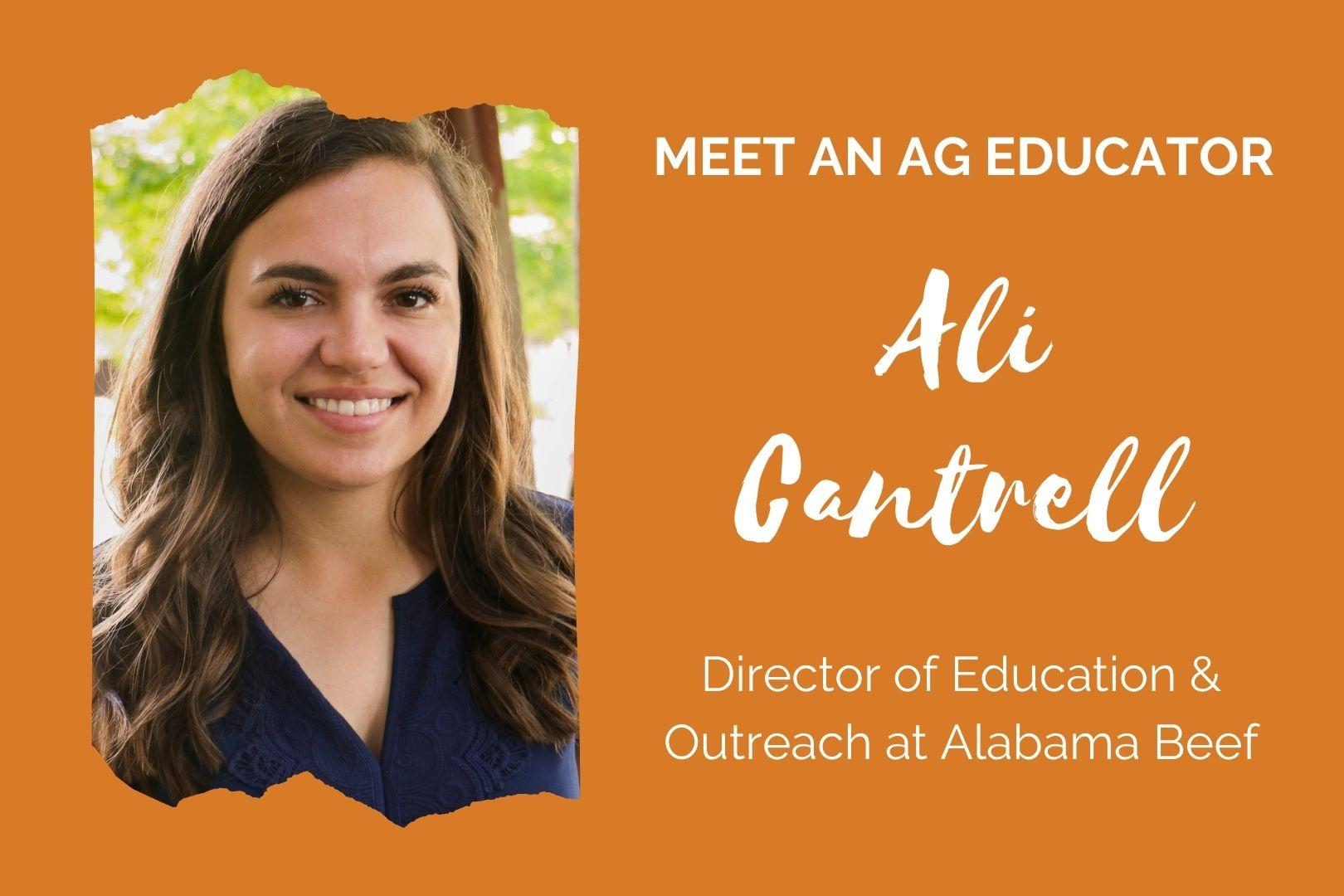
Livestock checkoffs have some unique challenges when it comes to ag education. Like field crop checkoffs, they address consumers’ concerns about sustainability and nutrition. But they also have the extra topics of food safety and animal welfare concerns to tackle.
Unsurprisingly, most livestock checkoffs prioritize consumer engagement. Despite the busy schedule that causes, though, one beef checkoff’s educator — Ali Cantrell, the Director of Education and Outreach for Alabama Beef — took the time to give us a peek into her work.
Exhibit Farm: So what does your everyday work look like?
Ali Cantrell: So basically, I work on consumer marketing and promotion for beef. We handle a lot of Spotify campaigns, cooking segments on local television series, billboards, anything to promote beef.
I also handle our consumer-facing educational programs. We have a Beef 101 program where we tell the whole pasture-to-plate story. I give them an overview of the beef industry. We show them a live animal and [explain] what producers do to raise safe and wholesome beef. And then we also break down a whole side of beef for them and explain the different cuts and things like that.
It’s a day-long program that we put on throughout the year. So basically my whole job is about educating the consumer as well as promoting the beef product.
EF: What are some of the big ideas or topics you try to cover in your programs?
AC: One of the big ideas is the nutrition of beef. [And] making sure people understand that farmers care about what they do, they care about their animals, that animal welfare is of the utmost importance. And then just telling the cattle producers’ story.
We also put on a lot of sustainability-type work. I know with the [Biden] administration right now, sustainability is top of mind, and it’s on our top of mind as well.

We’re actually doing a sustainability campaign with other commodities in the state. We have Poultry & Egg, we have Forestry, and other different commodities coming together to put on this campaign about the sustainability of agriculture. It’s a social media campaign, but we’re also having an event to kick it off where we’ve invited the governor to talk about what agriculture does to continue to be sustainable for the future. So we’re excited about that.
So those are the big subjects we want consumers to know about: sustainability, animal welfare, and just that cattlemen care.
EF: Beef checkoffs usually talk both about how consumers can cook beef and about how ranchers do their work. Do you prefer one topic or the other or find one more effective?
AC: It depends on who you’re targeting. For the person who’s gonna eat beef regardless — I worry about how they cook it, because some people will say “Oh, I don’t like beef, it doesn’t taste good”. A lot of times it’s ‘cause they cooked it wrong, not necessarily because the beef’s bad. Beef is always going to be flavorful and tender, it’s just they might [not] have cooked it right.
So, if it comes to that type of stuff, I prefer [talking about the beef]. It’s so easy to share a savory-looking product, and people want to share that and save it for a recipe. It’s very easy to do that.
I came from a cattle-raising background, so I do like telling the pasture-to-plate story. I think especially nowadays, [with] “local” being the new buzzword, [and people] wanting to buy local beef, wanting to know where their food comes from, that’s important. Being able to tell [people] where their food comes from and then being able to show how delicious it is, I think both of them go together pretty well.
So I couldn’t tell you which one I use more. The local aspect, especially since Covid, has really heightened. So I probably talk about that aspect a lot more than when I first started.
EF: What are some of the questions you hear people asking a lot?
AC: A lot of it is wanting to understand [labels like] organic, grass-fed vs. grain-fed. A lot of people think local beef is more nutritious than what they buy in the [grocery store]. And I always tell them, there’s no nutritional difference, it’s just preference. I do both; I buy local beef, and then if I need to I go to the [store] and buy from there.
I don’t want people pushing the message that if I buy organic beef it’s better than you buying traditional beef. If you want to buy organic beef, I want you to go and do it, but I don’t want people pushing that message of “That one’s less nutritious than the other”. I think that’s [what] I come across more than anything.
And being in the position I am, I have to be neutral regardless of what you choose. I just promote beef in general — which I feel that way personally anyway. When I’m talking to somebody, I [try] to tell them, “Hey, whatever you choose is a great product. Regardless of what’s on that label, it’s going to be good.”

One other thing that we worry about is a lot of people misunderstand the fact that nearly all farms, especially here in Alabama, are family-operated. At least 97% are family-operated, and a lot of people are just like “oh, there’s factory farming”. And I think when they think that, they think of feedlots, and they don’t understand that they’re two different entities. So it’s just educating the public on the terms.
EF: So what educational strategies do you find helpful to address those questions?
AC: I have a repertoire of farmers that I always lean on to come and talk to people. [They’re] relatable, down-to-earth people that put it in layman’s terms. I like to have a farmer with me that does it on a daily basis. Because while I do a good job of giving [consumers] an overview of the industry and how it works, they do a better job of giving that passion and that feeling of “this is what this farmer does on a day-to-day basis.”
Especially when it comes to my Beef 101s, I always invite a farmer to come and talk to them from the chute side of things. We’ll have a cow in a chute, and we’ll explain vaccines and what we do to ensure they’re healthy. And I always put a farmer in that spot to talk to them. Because they do a better job of explaining how they get them in the chute, how they make sure that there’s no stress, and things like that.
EF: I always like to end by asking people how they wound up in ag education.
AC: That’s a good question. I mean, I did FFA in high school, I think that was what spurred my passion for this industry. I started showing cattle and then I did all the contests and things of that nature. I wanted to be a vet at the time, and so I went to Texas A&M, got to Texas A&M, [and] realized I didn’t want to do four more years of school after that.
I knew I wanted to tell the story of agriculture. I knew that’s what I was passionate about from freshman year on. I got very involved with ag organizations, and we put a big input into talking about the story of agriculture, so I knew that’s the avenue I wanted to take. I interned with Texas Cattle Raiser’s Association, I interned in DC with the chairman of the Ag Committee in the House, so I did things that would orient [me towards agriculture] in general.
And when this job came open, it kind of fit all my boxes. It had telling the story, the pasture-to-plate story, but it also had promotion of the product in general. So that’s where I landed; everything kind of lined up the way it was supposed to. I don’t know if I ever thought of myself as being an ag educator, it was more like I just kept finding different avenues to tell my story.

